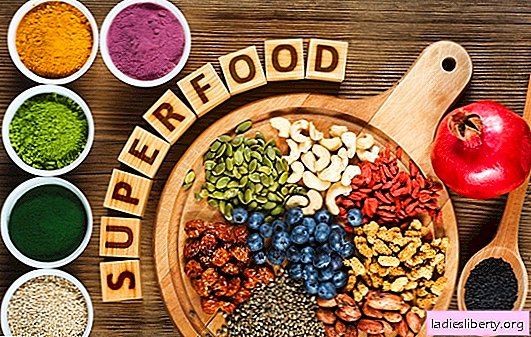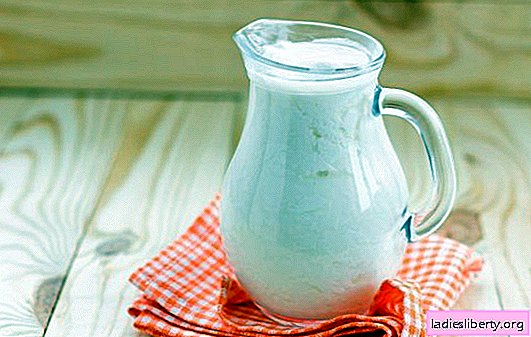
Superfoods are foods high in nutrients: vitamins, fats, or biologically active compounds. A positive effect on the human body has been scientifically tested in standard laboratory conditions.
However, how far these results can really be transferred to a person’s daily life remains dubious. The reason for this is laboratory conditions, which also include animal experiments and high doses. The food industry likes to use the term "superfood" for marketing purposes. But how true is the claim that "superfoods" help from serious illnesses?
The term "superfood" began to be used at the beginning of the XX century to refer to foods with high nutritional value.
An official or legally accurate explanation of the term does not exist.
According to the Oxford Dictionary, superfood is a nutrient-rich food that is good for your health.
The idea of superfoods gained popularity at the beginning of the twenty-first century. The media was filled with news about "ultra-nutritious" foods: from blueberries, beets to cocoa and salmon. Scientists still make claims that consuming these foods helps fight disease and the aging process. However, can these statements be trusted?
The current focus on superfoods is likely to be fueled by growing public interest in food and health, especially in developed countries. The term was introduced at the beginning of the XX century, although only recently it has become popular.
What is the evidence of their usefulness?
To distinguish between facts and advertising in the media, it is important to carefully study the scientific data.
The most popular and famous superfoods are blueberries, acai berries, pomegranates, cocoa and salmon fish.
Blueberries are characterized by a high concentration of a certain group of antioxidantsprimarily "anthocyanins." They kill colon cancer cells in humans. Blueberries are also rich in other antioxidants, and help prevent Alzheimer's.
Antioxidants are molecules that protect body cells from harmful free radicals. Free radicals “come” from cigarette smoke and alcohol, but also naturally occur in the human metabolism.
Too many free radicals in the body can cause oxidative stress, which damages healthy cells. As a result, age-related diseases develop - cancer, diabetes and myocardial infarction.
Other foods that have superfood status are acai berry and pomegranate. It has been demonstrated that the peel Acai berries have powerful antioxidant properties. The positive effect has been repeatedly confirmed in clinical studies.
Studies on pomegranate juice have shown that it can lower blood pressure and reduce oxidative stress.
Like pomegranate juice beets have also been declared "superfoods" that are good for the heart. High levels of nitrate are converted by the body into nitric oxide, which helps lower blood pressure.
Cocoa also reduces the risk of heart disease by lowering blood pressure and increase the elasticity of blood vessels. The protective effect on the heart and blood vessels is associated with a high content of flavonoids.
Salmon is also on the superfood list because omega-3 fatty acids help prevent heart problems. It has been shown that it can also relieve joint pain in patients with rheumatoid arthritis.
Is it obligatory to buy superfoods or can they be obtained from food?
The positive effect of many of the above products is short-lived and poorly studied in research. In order to feel the health benefits, superfoods must be consumed in very large doses daily.
Cocoa in the form of chocolate, for example, contains not only healthy flavonoids, but also a “shock” dose of sugar. 4-5 bars of chocolate per day can contribute to weight gain. Obesity, as you know, is the enemy of blood vessels and the heart.
Studying the effect of food on people is a difficult task: diet, genes, and lifestyle are different from person to person.
These parameters make it difficult to analyze the effects of nutrients on health. Accordingly, when researching the effects of products on people, a different approach should be used. Currently, there are no research methods that would help with high accuracy to determine the "usefulness" of food.
Researchers are studying the “usefulness” of food in isolation from other foods. In everyday life, people usually consume different foods in combination. Therefore, the use of a single product for analysis does not reflect the real human diet.
There is evidence that the concomitant use of various foods increases the body's ability to absorb nutrients. Beta-carotene (a precursor to vitamin A) found in carrots and spinach is easier to digest when consumed in fat. Bitter substances improve the absorption of fats, and sugars improve carbohydrates.
The average person gets sugars, fats, vitamins and proteins from 2-3 servings of food. In average human food contains more than 500 different substances that can affect each other. It is almost impossible to assess the real impact of each individual food.
Even if scientists put it in a human cell and feed them with specific food, it will not be possible to reveal the effect.
Modern scientific knowledge does not allow to evaluate the actual "usefulness" of superfoods. Therefore, scientists evaluate the effect of individual substances on the body.
The usefulness of superfoods has not been proven, so applying them in large doses does not always make sense. A balanced diet, including vitamins, minerals, proteins, fiber, carbohydrates and fats, is a proven way to prevent disease.
Simple foods support health just as effectively as superfoods!











